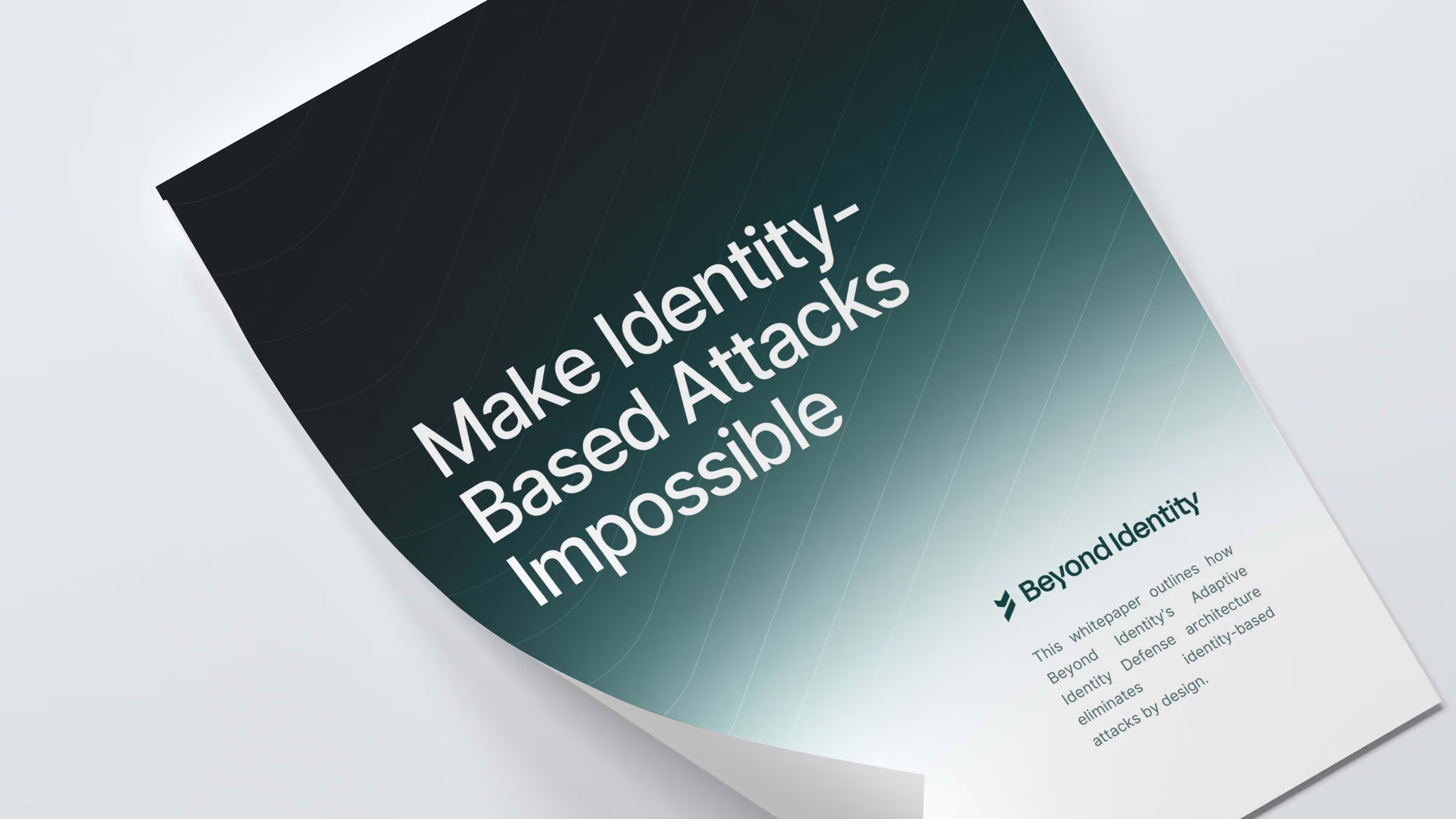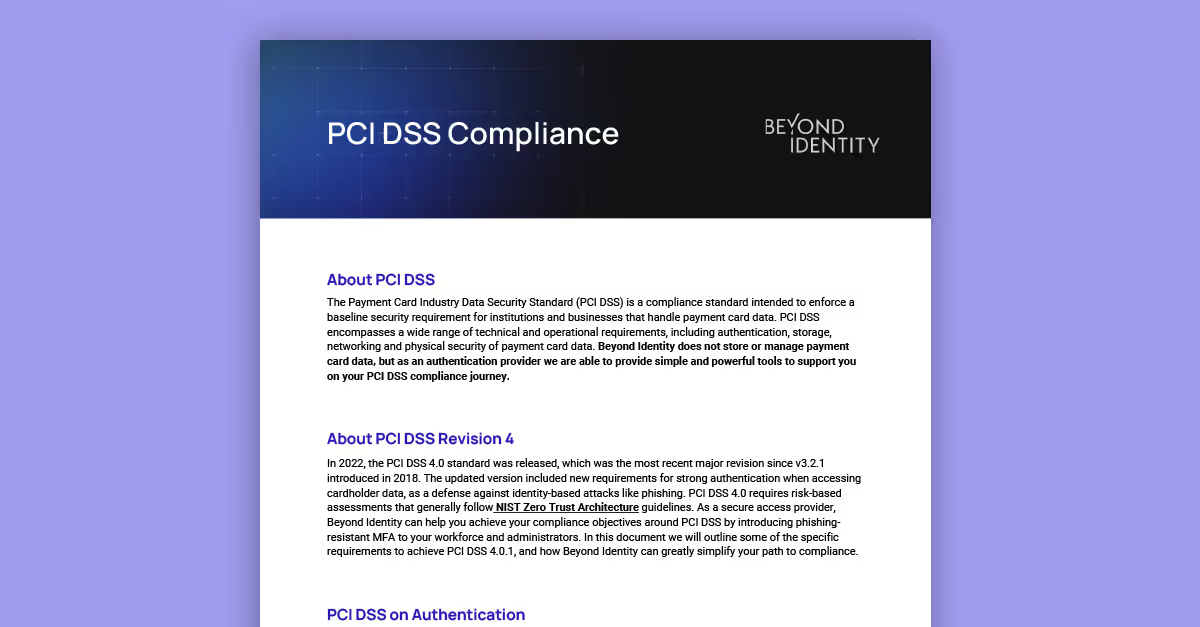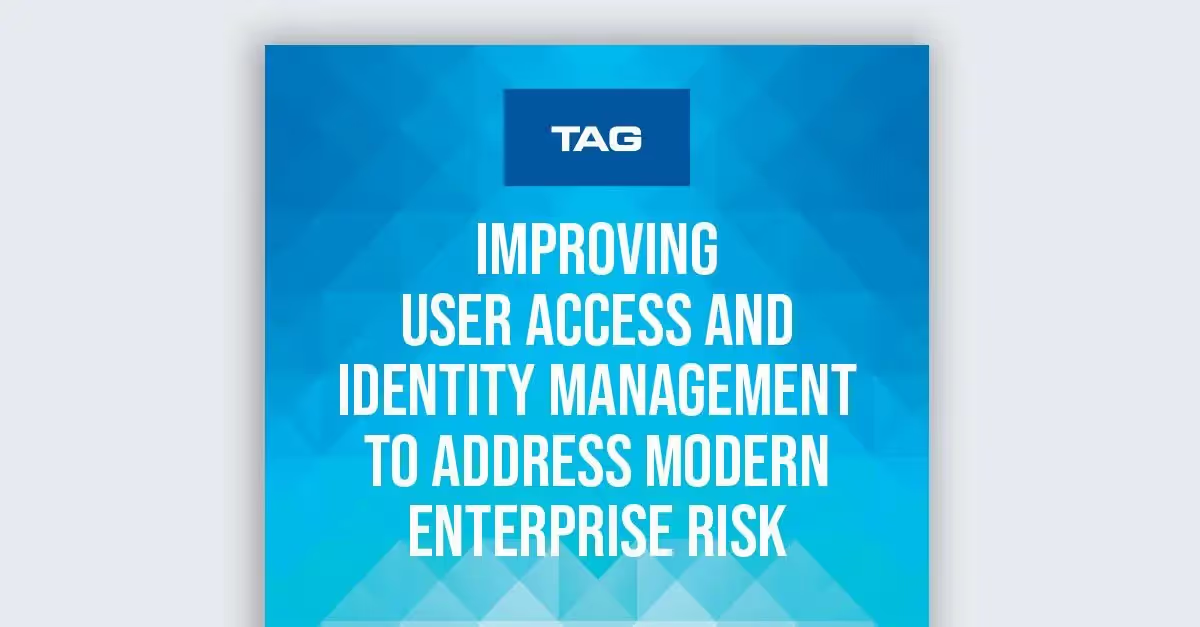Zero Trust Authentication and Least Privilege
Cyber attacks have been on the rise for years, with ransomware leading the charge. In fact, ransomware attacks are now at an all-time high. As more people work from multiple places and devices, the threat landscape has expanded beyond the traditional security perimeter, making organizations more vulnerable to attack.
This underscores the need for stricter user access policies to limit the attack surface. When users have excessive privileges within a network, a single weak point—for example, a compromised password or device—could give bad actors entry to more data than they otherwise might access.
With the average cost of a data breach projected to reach $4.2 million in 2023, it is more important than ever for organizations to improve their cybersecurity posture through Zero Trust Authentication and least privilege policies.
The essence of least privilege
The principle of least privilege is a key element of a zero trust model.
Least privilege focuses on:
- Restricting access rights for users and accounts to only those resources absolutely required to perform legitimate functions
- Enforcing the minimal level of user rights, or lowest clearance level, that allows the user to perform their role.
In other words, instead of allowing broad access privileges to users who don’t need it to do their jobs, least privilege means all users, processes, applications, systems, and devices have the requisite access to perform their function and nothing more.
Since most attacks exploit privileged credentials to gain entry and move laterally through the network, PoLP adds a layer of protection, limiting the attack surface and scope of a breach.
Transitioning from perimeter to zero trust
Traditional perimeter-based security assumes that everyone within a network can be trusted. This means cybersecurity efforts are focused primarily on securing the network from the outer perimeter in a “castle and moat” approach. But in today’s digital landscape, this model is no longer sufficient.
With many users working remotely and accessing data from separate devices, there are now exponentially more endpoints to secure—and those endpoints are often managed by third parties or owned by employees and customers. This means it is no longer safe to assume any user or device in a network is trustworthy.
That’s where zero trust security comes in.
The zero trust model assumes that all users both within and outside a network are a potential threat and must be verified before granting access. It eliminates the trust assumptions built into traditional perimeter security and treats all users as untrusted. By using risk-based policies to determine who should be granted access, zero trust strengthens security while reducing the risk of a breach.
Zero Trust Authentication and least privilege
Least privilege is a fundamental principle of a zero trust model. Zero trust applies least privilege to enable a granular approach to authentication and authorization. Every user must be authenticated and authorized on a continuous basis to establish trust that any given user or device meets your security policies.
For Zero Trust Authentication, this means relying on phishing-resistant MFA and a robust policy engine to continuously monitor and verify. From there, a policy of least privilege reinforces zero trust principles by limiting the scope of authorization to applications.
For instance, rather than following role-based access controls, which group users into roles and grant broad access based on their assigned roles, least privilege access in a zero trust model ensures that users and devices only have access to what they need when they need it–even down to specific files.
Beyond Identity's approach
Beyond Identity’s leading Zero Trust Authentication solution leverages phishing-resistant, passwordless MFA to deliver continuous risk-based authentication. By tying identities to devices so only registered devices can request access, Beyond Identity enforces the principle of least privilege, maintaining precise access control 24/7.
Zero trust is growing quickly, with 31% of organizations expected to be employing it by the end of 2023. And it’s no wonder. Zero trust offers organizations a more robust and reliable security framework in an increasingly volatile and risky landscape.
Lay the foundation for Zero Trust Authentication today with Beyond Identity.
Cyber attacks have been on the rise for years, with ransomware leading the charge. In fact, ransomware attacks are now at an all-time high. As more people work from multiple places and devices, the threat landscape has expanded beyond the traditional security perimeter, making organizations more vulnerable to attack.
This underscores the need for stricter user access policies to limit the attack surface. When users have excessive privileges within a network, a single weak point—for example, a compromised password or device—could give bad actors entry to more data than they otherwise might access.
With the average cost of a data breach projected to reach $4.2 million in 2023, it is more important than ever for organizations to improve their cybersecurity posture through Zero Trust Authentication and least privilege policies.
The essence of least privilege
The principle of least privilege is a key element of a zero trust model.
Least privilege focuses on:
- Restricting access rights for users and accounts to only those resources absolutely required to perform legitimate functions
- Enforcing the minimal level of user rights, or lowest clearance level, that allows the user to perform their role.
In other words, instead of allowing broad access privileges to users who don’t need it to do their jobs, least privilege means all users, processes, applications, systems, and devices have the requisite access to perform their function and nothing more.
Since most attacks exploit privileged credentials to gain entry and move laterally through the network, PoLP adds a layer of protection, limiting the attack surface and scope of a breach.
Transitioning from perimeter to zero trust
Traditional perimeter-based security assumes that everyone within a network can be trusted. This means cybersecurity efforts are focused primarily on securing the network from the outer perimeter in a “castle and moat” approach. But in today’s digital landscape, this model is no longer sufficient.
With many users working remotely and accessing data from separate devices, there are now exponentially more endpoints to secure—and those endpoints are often managed by third parties or owned by employees and customers. This means it is no longer safe to assume any user or device in a network is trustworthy.
That’s where zero trust security comes in.
The zero trust model assumes that all users both within and outside a network are a potential threat and must be verified before granting access. It eliminates the trust assumptions built into traditional perimeter security and treats all users as untrusted. By using risk-based policies to determine who should be granted access, zero trust strengthens security while reducing the risk of a breach.
Zero Trust Authentication and least privilege
Least privilege is a fundamental principle of a zero trust model. Zero trust applies least privilege to enable a granular approach to authentication and authorization. Every user must be authenticated and authorized on a continuous basis to establish trust that any given user or device meets your security policies.
For Zero Trust Authentication, this means relying on phishing-resistant MFA and a robust policy engine to continuously monitor and verify. From there, a policy of least privilege reinforces zero trust principles by limiting the scope of authorization to applications.
For instance, rather than following role-based access controls, which group users into roles and grant broad access based on their assigned roles, least privilege access in a zero trust model ensures that users and devices only have access to what they need when they need it–even down to specific files.
Beyond Identity's approach
Beyond Identity’s leading Zero Trust Authentication solution leverages phishing-resistant, passwordless MFA to deliver continuous risk-based authentication. By tying identities to devices so only registered devices can request access, Beyond Identity enforces the principle of least privilege, maintaining precise access control 24/7.
Zero trust is growing quickly, with 31% of organizations expected to be employing it by the end of 2023. And it’s no wonder. Zero trust offers organizations a more robust and reliable security framework in an increasingly volatile and risky landscape.
Lay the foundation for Zero Trust Authentication today with Beyond Identity.
Cyber attacks have been on the rise for years, with ransomware leading the charge. In fact, ransomware attacks are now at an all-time high. As more people work from multiple places and devices, the threat landscape has expanded beyond the traditional security perimeter, making organizations more vulnerable to attack.
This underscores the need for stricter user access policies to limit the attack surface. When users have excessive privileges within a network, a single weak point—for example, a compromised password or device—could give bad actors entry to more data than they otherwise might access.
With the average cost of a data breach projected to reach $4.2 million in 2023, it is more important than ever for organizations to improve their cybersecurity posture through Zero Trust Authentication and least privilege policies.
The essence of least privilege
The principle of least privilege is a key element of a zero trust model.
Least privilege focuses on:
- Restricting access rights for users and accounts to only those resources absolutely required to perform legitimate functions
- Enforcing the minimal level of user rights, or lowest clearance level, that allows the user to perform their role.
In other words, instead of allowing broad access privileges to users who don’t need it to do their jobs, least privilege means all users, processes, applications, systems, and devices have the requisite access to perform their function and nothing more.
Since most attacks exploit privileged credentials to gain entry and move laterally through the network, PoLP adds a layer of protection, limiting the attack surface and scope of a breach.
Transitioning from perimeter to zero trust
Traditional perimeter-based security assumes that everyone within a network can be trusted. This means cybersecurity efforts are focused primarily on securing the network from the outer perimeter in a “castle and moat” approach. But in today’s digital landscape, this model is no longer sufficient.
With many users working remotely and accessing data from separate devices, there are now exponentially more endpoints to secure—and those endpoints are often managed by third parties or owned by employees and customers. This means it is no longer safe to assume any user or device in a network is trustworthy.
That’s where zero trust security comes in.
The zero trust model assumes that all users both within and outside a network are a potential threat and must be verified before granting access. It eliminates the trust assumptions built into traditional perimeter security and treats all users as untrusted. By using risk-based policies to determine who should be granted access, zero trust strengthens security while reducing the risk of a breach.
Zero Trust Authentication and least privilege
Least privilege is a fundamental principle of a zero trust model. Zero trust applies least privilege to enable a granular approach to authentication and authorization. Every user must be authenticated and authorized on a continuous basis to establish trust that any given user or device meets your security policies.
For Zero Trust Authentication, this means relying on phishing-resistant MFA and a robust policy engine to continuously monitor and verify. From there, a policy of least privilege reinforces zero trust principles by limiting the scope of authorization to applications.
For instance, rather than following role-based access controls, which group users into roles and grant broad access based on their assigned roles, least privilege access in a zero trust model ensures that users and devices only have access to what they need when they need it–even down to specific files.
Beyond Identity's approach
Beyond Identity’s leading Zero Trust Authentication solution leverages phishing-resistant, passwordless MFA to deliver continuous risk-based authentication. By tying identities to devices so only registered devices can request access, Beyond Identity enforces the principle of least privilege, maintaining precise access control 24/7.
Zero trust is growing quickly, with 31% of organizations expected to be employing it by the end of 2023. And it’s no wonder. Zero trust offers organizations a more robust and reliable security framework in an increasingly volatile and risky landscape.
Lay the foundation for Zero Trust Authentication today with Beyond Identity.










.avif)
.avif)
.avif)

.avif)



.avif)






.avif)

